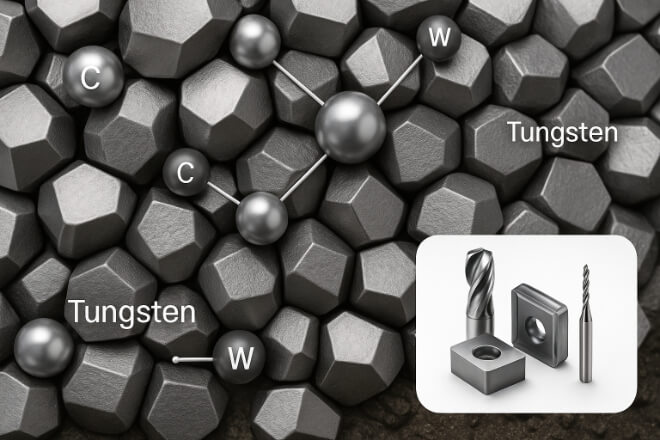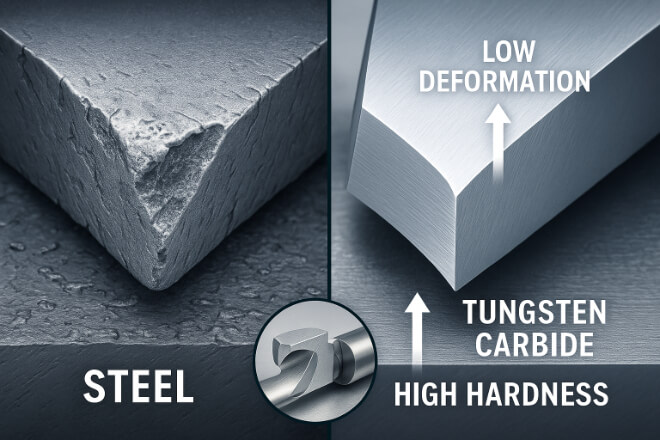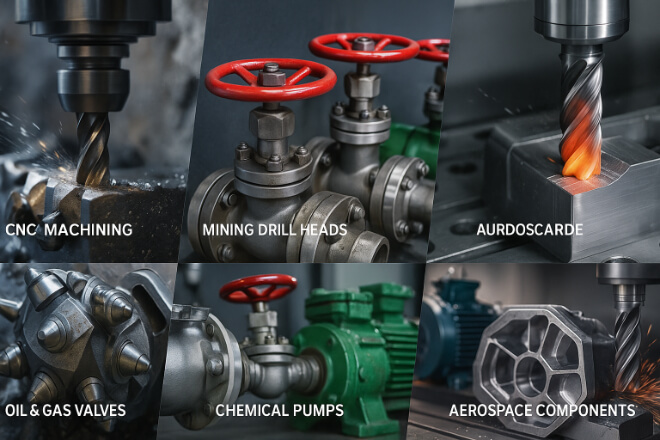碳化钨如何承受高温
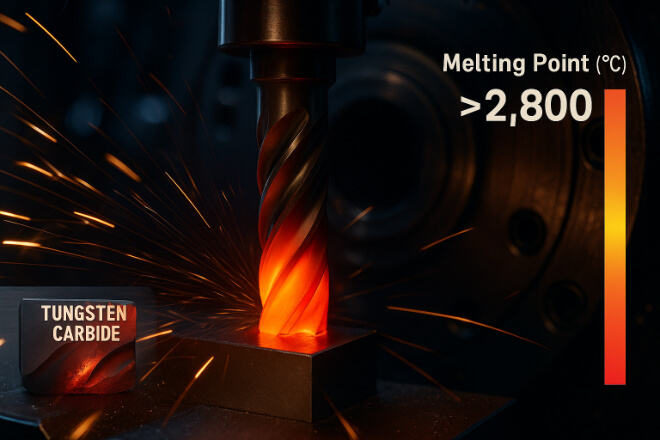
在高速切割或钻孔时,摩擦会产生大量热量。
许多金属在高温下会软化或失去强度,但碳化钨却能保持其性能。
其耐热性的原因:
高熔点——碳化钨的熔点超过 2,800°C (5,072°F),远高于大多数工业过程中产生的热量。
热稳定性——即使在炽热条件下也能保持硬度。
低热膨胀——它不会随着温度变化而膨胀或变形,有助于保持加工精度。
例如:在 航天 零件加工中,刀具可以以更高的切削速度运行而不会变形,从而提高生产率。
碳化钨如何抗腐蚀
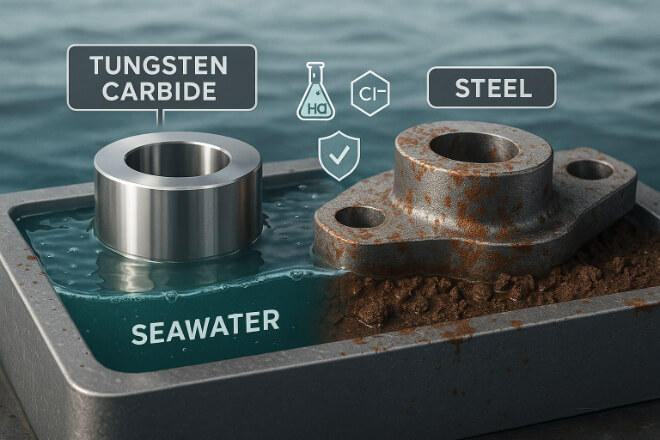
在化学加工等行业, 石油和天然气或海洋环境中,工具和零件可能会暴露于水、酸、盐或其他腐蚀性物质中。
碳化钨耐腐蚀是因为:
化学稳定性——钨和碳形成一种稳定的化合物,不易与大多数化学物质发生反应。
保护性粘合剂的选择——使用镍粘合剂代替钴可以提高在酸性或富含氯化物的环境中的抵抗力。
涂层——涂层碳化钨工具(例如 TiN、TiAlN)提供额外的防腐保护。
例如:海上钻井平台的碳化钨阀座可以在咸海水中持续使用数年,而钢材则会迅速腐蚀。
碳化钨与其他材料的比较
以下是碳化钨与其他常见刀具材料的比较:
| 财产 | 碳化钨 | 高速钢(HSS) | 陶瓷 |
|---|---|---|---|
| 耐磨性 | 出色的 | 好的 | 出色的 |
| 耐热性 | 出色的 | 中等的 | 出色的 |
| 耐腐蚀 | 从优秀到优秀 | 贫穷的 | 出色的 |
| 韧性 | 高的 | 高的 | 低的 |
| 成本 | 中高 | 低的 | 高的 |
使用碳化钨延长刀具寿命
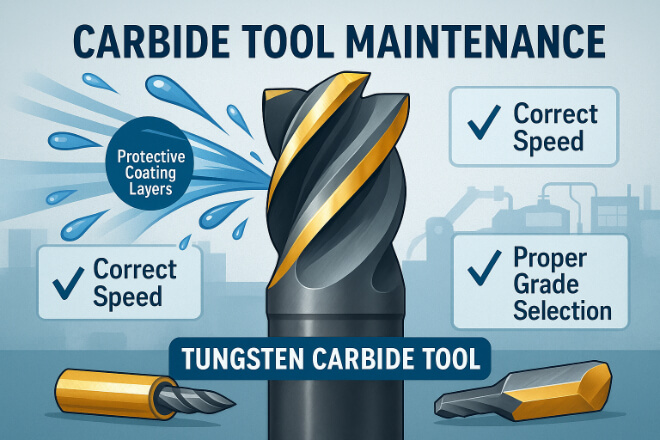
为了最大限度地发挥碳化钨的功效:
选择正确的等级——选择细粒用于精加工,选择粗粒用于重切削。
使用适当的涂层 – 使用 TiAlN 或 DLC 涂层以增加保护。
应用正确的速度和进给 - 避免工具超载以防止崩刃。
需要时使用冷却剂——在高温应用中,冷却剂有助于保护工具。
为什么决策者更青睐碳化钨
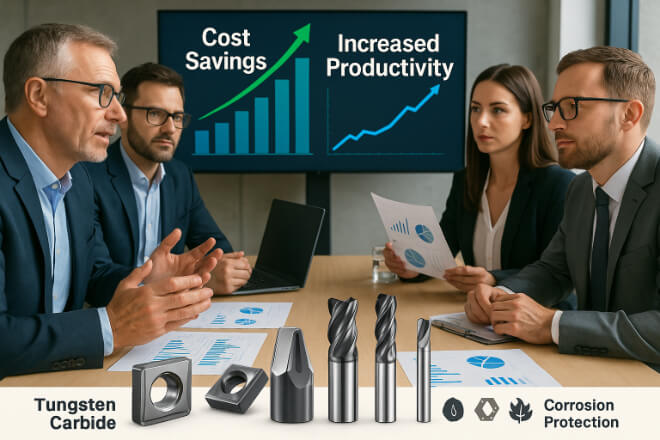
对于企业领导者和工程师来说,投资碳化钨工具的决定关乎价值:
更长的刀具寿命意味着更少的更换和更低的成本。
生产率更高,因为工具可以运行得更快并切割更硬的材料。
由于长期保持一致的精度,因此质量更好。
尽管碳化钨工具的前期成本可能较高,但从长远来看,它们通常可以通过减少停机时间和提高产量来节省成本。
结论
碳化钨独特的耐磨性、耐热性和耐腐蚀性组合使其成为在恶劣环境下要求高性能的行业的首选。
对于决策者来说,投资碳化钨意味着更可靠的生产、更低的维护成本和更好的长期回报。
如果您想了解任何公司的更多详细信息,请随时 联系我们。

